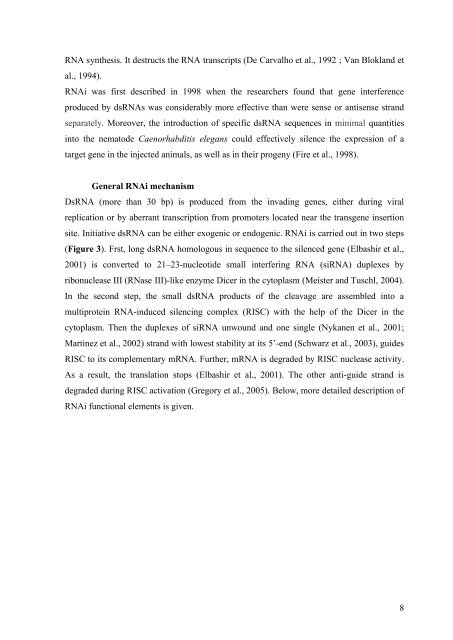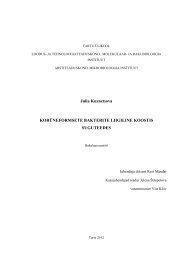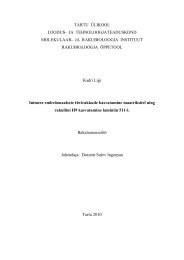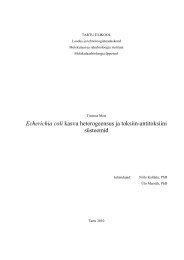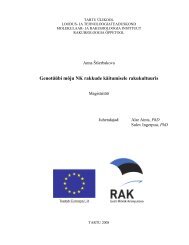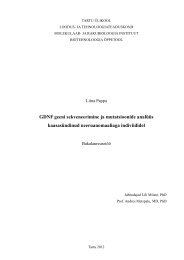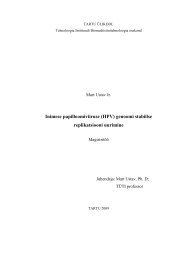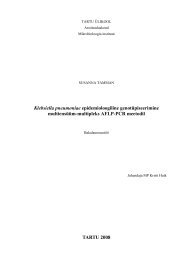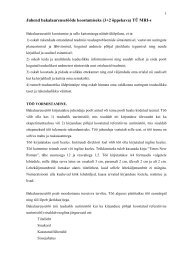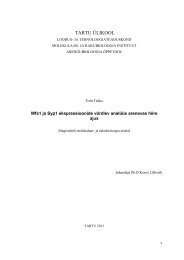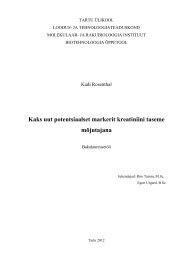Viruses and RNA interference in mammalian cells
Viruses and RNA interference in mammalian cells
Viruses and RNA interference in mammalian cells
You also want an ePaper? Increase the reach of your titles
YUMPU automatically turns print PDFs into web optimized ePapers that Google loves.
<strong>RNA</strong> synthesis. It destructs the <strong>RNA</strong> transcripts (De Carvalho et al., 1992 ; Van Blokl<strong>and</strong> et<br />
al., 1994).<br />
<strong>RNA</strong>i was first described <strong>in</strong> 1998 when the researchers found that gene <strong><strong>in</strong>terference</strong><br />
produced by ds<strong>RNA</strong>s was considerably more effective than were sense or antisense str<strong>and</strong><br />
separately. Moreover, the <strong>in</strong>troduction of specific ds<strong>RNA</strong> sequences <strong>in</strong> m<strong>in</strong>imal quantities<br />
<strong>in</strong>to the nematode Caenorhabditis elegans could effectively silence the expression of a<br />
target gene <strong>in</strong> the <strong>in</strong>jected animals, as well as <strong>in</strong> their progeny (Fire et al., 1998).<br />
General <strong>RNA</strong>i mechanism<br />
Ds<strong>RNA</strong> (more than 30 bp) is produced from the <strong>in</strong>vad<strong>in</strong>g genes, either dur<strong>in</strong>g viral<br />
replication or by aberrant transcription from promoters located near the transgene <strong>in</strong>sertion<br />
site. Initiative ds<strong>RNA</strong> can be either exogenic or endogenic. <strong>RNA</strong>i is carried out <strong>in</strong> two steps<br />
(Figure 3). Frst, long ds<strong>RNA</strong> homologous <strong>in</strong> sequence to the silenced gene (Elbashir et al.,<br />
2001) is converted to 21–23-nucleotide small <strong>in</strong>terfer<strong>in</strong>g <strong>RNA</strong> (si<strong>RNA</strong>) duplexes by<br />
ribonuclease III (RNase III)-like enzyme Dicer <strong>in</strong> the cytoplasm (Meister <strong>and</strong> Tuschl, 2004).<br />
In the second step, the small ds<strong>RNA</strong> products of the cleavage are assembled <strong>in</strong>to a<br />
multiprote<strong>in</strong> <strong>RNA</strong>-<strong>in</strong>duced silenc<strong>in</strong>g complex (RISC) with the help of the Dicer <strong>in</strong> the<br />
cytoplasm. Then the duplexes of si<strong>RNA</strong> unwound <strong>and</strong> one s<strong>in</strong>gle (Nykanen et al., 2001;<br />
Mart<strong>in</strong>ez et al., 2002) str<strong>and</strong> with lowest stability at its 5’-end (Schwarz et al., 2003), guides<br />
RISC to its complementary m<strong>RNA</strong>. Further, m<strong>RNA</strong> is degraded by RISC nuclease activity.<br />
As a result, the translation stops (Elbashir et al., 2001). The other anti-guide str<strong>and</strong> is<br />
degraded dur<strong>in</strong>g RISC activation (Gregory et al., 2005). Below, more detailed description of<br />
<strong>RNA</strong>i functional elements is given.<br />
8


